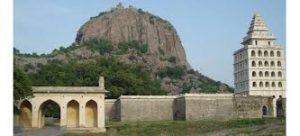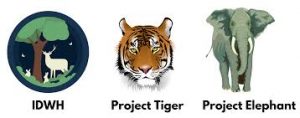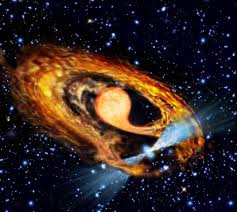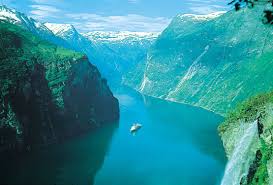Today’s Current Affairs: 25th September 2024 for UPSC IAS exams, State PSC exams, SSC CGL, State SSC, RRB, Railways, Banking Exam & IBPS, etc
Table of Contents
Navegaon-Nagzira Tiger Reserve:

The Navegaon-Nagzira Tiger Reserve (NNTR) lost its dominant male tiger, T9, recently.
- Navegaon-Nagzira Tiger Reserve (NNTR) spans 653.67 sq.km. across the Gondia and Bhandara districts of Maharashtra.
- It is located in the heart of the central Indian Tiger Landscape, which contributes almost 1/6 of the total tiger population of the country.
- Declared a tiger reserve in 2013, it is the fifth tiger reserve in Maharashtra.
- NNTR is comprised of the notified areas of Nawegaon National Park, Nawegaon Wildlife Sanctuary, Nagzira Wildlife Sanctuary, New Nagzira Wildlife Sanctuary, and Koka Wildlife Sanctuary.
- It has linkages with Kanha, Pench, and Tadoba Tiger Reserves.
- The topography is undulating, and the highest point, viz. ‘Zenda Pahad’, is around 702 m above Mean Sea Level.
- Vegetation: Southern Tropical Dry Deciduous
- There are 364 species of plants, and the major trees are: Terminalia tomentosa, Lagerstroemia parviflora, Anogeisus lotifolia, Pterocarpus marsupium, Diospyrus melanoxylon, Ougeinia oogenesis, etc.
- The major wild animals are: Tiger, Panther, Small Indian Civet, Palm Civet, Wolf, Jackal, Wild Dog, Sloth Bear, Ratel, Common Giant Flying Squirrel, Gaur, Sambar, Chital, Four Horned Antelope, Mouse Deer, and Pangolin.
Gingee Fort Has Been Nominated For UNESCO’s World Heritage Site list:

The Gingee Fort in Tamil Nadu’s Villupuram district has been nominated for UNESCO’s World Heritage Site list as part of the Maratha Military Landscapes proposal, which includes 11 other forts.
- Gingee Fort is renowned for its historical importance and strategic location atop three hillocks: Rajagiri, Krishnagiri, and Chandragiri.
- It is also known as the “Troy of the East,” as it is one of the most impregnable fortresses in peninsular India.
- Its strategic location and robust defences, including a 60-foot-wide rampart and an 80-foot-wide moat, made it vital during the Carnatic Wars between the French and British.
- The fort was originally built by Ananta Kon of the Konar Dynasty in 1200 CE and named it Krishnagiri.
- Vijayanagar Empire undertook significant renovations of the fort.
- In 1677, the fort was captured by Chhatrapati Shivaji and remained under Maratha control until 1698, when it fell to the Mughals.
- The Fort became the last stronghold for the Marathas (Rajaram I, son of Shivaji) during their resistance against the Mughal forces.
- Briefly ruled by Raja Desingh (Tej Singh), it was taken over by the Nawabs of Arcot in 1714 and remained under their dominion until 1749.
- From 1750 to 1770, the French held the fort before it eventually passed into Britishers.
SPICED Scheme:

The Union Ministry of Commerce and Industry has approved a Spices Board scheme, ‘Sustainability in the spice sector through progressive, innovative and collaborative interventions for export development’ (SPICED) scheme.
- SPICED Scheme is aimed at significantly enhancing the export of spices and value- added spice products as well as improving the productivity of cardamoms and upgrading the post-harvest quality of spices across India for export.
- It is implemented during the remaining term of the 15th Finance Commission, up to 2025-26.
Key highlights of the Scheme:
- It is expected to facilitate value addition and to drive innovation and sustainability in the spice sector by introducing new sub-components/programs like the Mission Value Addition, Mission Clean and Safe Spices, promotion of GI spices, support for entrepreneurship through Spice Incubation Centres, etc.
- The scheme gives thrust on farmers groups / FPOS / Farmers Clusters identified under ODOP and DEH, SC/ST community, Exporters from NE region, and SMEs.
- While exporters with a valid Certificate of Registration as Exporter of Spices (CRES) are eligible for assistance under these programs, preference will be given to first-time applicants, Small and Medium Enterprises (SMEs), etc.
- The programs under the components such as Improving the productivity of cardamom and Post-harvest quality upgradation of spices are specifically designed to empower farmer groups, including Farmer Producer Organizations (FPOs), Farmer Producer Companies (FPCs), and Self-Help Groups (SHGs) in key spice-growing regions.
- These groups will be prioritized for post-harvest improvement of spices, with targeted assistance provided to enhance creation of an exportable surplus of spices, in compliance with the applicable food safety and quality standards.
Scheme activities will be geo-tagged and fund availability, status of applications under different components, list of beneficiaries, etc. will be published in the Board’s website for better transparency.
Integrated Development of Wildlife Habitat Scheme:

The Union Cabinet approved continuation of the Integrated Development of Wildlife Habitats for the 15th Finance Commission cycle.
- Integrated Development of Wildlife Habitat Scheme is a Centrally Sponsored Scheme launched by the union Ministry of Environment, Forest and Climate Change.
- It has been made operational by adding more components and activities to the erstwhile Centrally Sponsored Scheme – “Assistance for the Development of National Parks and Sanctuaries” during the 11th Plan Period.
- It envisages boosting technological interventions in different thematic areas over the current and next financial year in tiger and other wildlife habitats.
- Under this scheme 55 tiger reserves, 33 elephant reserves and 718 protected areas and their zones of influence stand to benefit.
- Support to Protected Areas (National Parks, Wildlife Sanctuaries, Conservation Reserves and Community Reserves)
- Protection of Wildlife Outside Protected Areas
- Recovery programmes for saving critically endangered species and habitats
Epigenetics:

Epigenetics plays a critical role in human health by regulating gene expression without the direct modification of DNA sequence.
- Epigenetics is the study of how cells control gene activity without changing the DNA sequence.
- “Epi-“means on or above in Greek, and “epigenetic” describes factors beyond the genetic code.
- Epigenetic changes are modifications to DNA that regulate whether genes are turned on or off.
- These Epigenetic modifications are attached to DNA and do not change the sequence of DNA building blocks.
- Within the complete set of DNA in a cell (the genome), all of the modifications that regulate the activity (expression) of the genes is known as the epigenome.
- Because epigenetic changes help determine whether genes are turned on or off, they influence the production of proteins in cells.
- This regulation helps ensure that each cell produces only proteins that are necessary for its function. For example, proteins that promote bone growth are not produced in muscle cells.
- Patterns of epigenetic modification vary among individuals, in different tissues within an individual, and even in different cells within a tissue.
- Environmental influences, such as a person’s diet and exposure to pollutants, can impact the epigenome.
- Epigenetic modifications can be maintained from cell to cell as cells divide and, in some cases, can be inherited through the generations.
- Errors in the epigenetic process, such as modification of the wrong gene or failure to add a chemical group to a particular gene or histone, can lead to abnormal gene activity or inactivity.
- Altered gene activity, including that caused by epigenetic errors, is a common cause of genetic disorders.
- Conditions such as cancers, metabolic disorders, and degenerative disorders have been found to be related to epigenetic errors.
New Millisecond Pulsar:

Using the Green Bank Telescope (GBT), astronomers detected a new millisecond pulsar associated with a recently observed globular cluster known as Terzan 6.
- Pulsars are rapidly rotating neutron stars that blast out pulses of radiation at regular intervals ranging from seconds to milliseconds.
- Pulsars have very strong magnetic fields, which funnel jets of particles out along the two magnetic poles. These accelerated particlesproduce very powerful beams of light.
- Often, the magnetic field is not aligned with the spin axis, so those beams of particles and light are swept around as the star rotates.
- The periodicity of pulsars is caused by these beams of light crossing the line of sight on Earth, with the pulsar appearing to ‘switch off’ at points when the light is facing away from us. The time between these pulses is the ‘period’ of the pulsar.
- Pulsars have been primarily observed at radio wavelengths.
- Pulsar masses range between 1.18 and 1.97 times that of the Sun, but most pulsars have a mass 1.35 times that of the Sun.
Fjord:

A diesel fuel spill from a ship that sank recently spreads to the Greenland fjord.
- A fjord is a long, deep, narrow body of water that reaches far inland.
- Fjords are often set in a U-shaped valleywith steep walls of rock on either side.
- Fjords are found mainly in Norway, Chile, New Zealand, Canada, Greenland, and the U.S. state of Alaska
- Fjords have been shaped throughout the span of several ice ages by slow-moving glaciers.
- As the glacier moved, it cut away at the top layers of ice and into the sediment below.
- Melting waters also carved away into the land, meaning that many fjords are actually deeper than the sea that feeds into it.
- Where the fjord meets the sea, also known as the mouth, many glaciers left behind shill or shoal rock deposits.
- Because the mouth is a shallower opening than the body of the fjord, it results in extremely fast-moving water (this includes strong currents and saltwater rapids).
- Fjords commonly are deeper in their middle and upper reaches than at the seaward end.
- This results from the greater erosive power of the glaciers closer to their source, where they are moving most actively and vigorously.
- Because of the comparatively shallow thresholds of fjords, the bottoms of many have stagnant water and are rich in black mud containing hydrogen sulfide.
- Some features of fjords include coral reefsand rocky islands called skerries.
Union Minister Piyush Goyal inaugurates Invest India’s new office in Singapore:
Union Commerce and Industry Minister Piyush Goyal inaugurated Invest India’s new office in Singapore. The office will serve as a dedicated point of contact for companies from the region looking to invest in India, fostering collaboration across sectors.
World Rhino Day 2024:
World Rhino Day is celebrated on September 22 every year. This special day provides the opportunity for cause-related organizations, NGO, zoos, and members of the public to celebrate rhinos in their own unique ways.
Most Prolific Indian Film Star:
Megastar Chiranjeevi has been officially recognized by Guinness World Records as the most prolific actor/dancer in the Indian film industry. Over 45 years, he has performed an astonishing 24,000 dance moves in 537 songs across 156 films.
25th Edition of IIFA Awards:
Jaipur, the capital of Rajasthan, is set to host the prestigious 25th edition of the International Indian Film Academy (IIFA) Awards from March 7 to 9, 2025, at the JECC Sitapura. The announcement was made during a formal agreement signing ceremony at the iconic Albert Hall, attended by Deputy Chief Minister Diya Kumari.
Laapataa Ladies: India’s Official Entry for Oscars 2025
The Film Federation of India has officially announced that filmmaker Kiran Rao’s “Laapataa Ladies” has been chosen as India’s official entry in the Best Foreign Film Category for the Oscars 2025. This selection marks a significant milestone for the film and its creators, putting it on the global stage of cinema.
Longest ISS Flight:
Russian cosmonauts Oleg Kononenko and Nikolai Chub have set a new record for the longest single mission aboard the International Space Station (ISS), surpassing the previous record held by cosmonauts Sergei Prokopyev, Dmitry Petelin, and NASA astronaut Francisco Rubio, who spent 370 days onboard from September 2022 to September 2023.
JK Lakshmi Cement and Rohit Sharma Celebrate Five Years of Association:
The partnership between JK Lakshmi Cement (JKLC) and Indian cricket team captain Rohit Sharma enters its fifth consecutive year. Known for his cricketing excellence and leadership, Sharma’s association has strengthened the brand’s image and helped JKLC connect with a wider audience.
Kalikesh Singh Deo Elected National Rifle Association of India president:
The National Rifle Association of India (NRAI) has ushered in a new era of leadership with the election of Kalikesh Narayan Singh Deo as its president. This significant event took place during a General Body meeting held at the Constitution Club on Saturday, marking a pivotal moment in the organization’s history
First CO2-To-Methanol Pilot Plant:
The foundation stone for India’s first of its kind CO2-to-Methanol pilot plant with an overall capacity of 1.4 Tons Per Day (TPD) was unveiled virtually by Prof. Abhay Karandikar, Secretary, Department of Science and Technology (DST), Government of India, at Thermax Limited premises in Pune, Maharashtra.
Ekalabya Puraskar:
Emerging swimmer Pratyasa Ray has been selected for the 32nd Ekalabya Puraskar for 2024 for her achievements in swimming. A proud moment for Odisha’s sporting fraternity.
Managing Director and CEO of Federal Bank:
KVS Manian has officially taken charge as the Managing Director and CEO of Federal Bank, effective September 23, 2024. He succeeds Shyam Srinivasan, who retired after successfully leading the bank since 2010.
India to get first national security semiconductor fabrication plant as part of collaboration with US:
Under a transformative collaboration with the United States, India is set to launch its inaugural national security semiconductor fabrication plant, designed to produce chips for military applications and critical telecommunications. Aim of Project To harness India’s growing design and manufacturing capabilities in the semiconductor sector.




